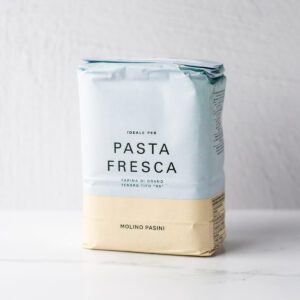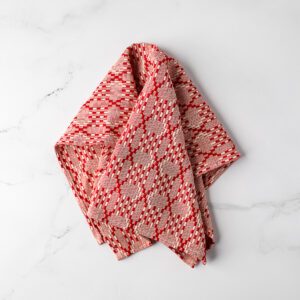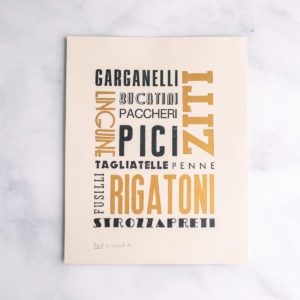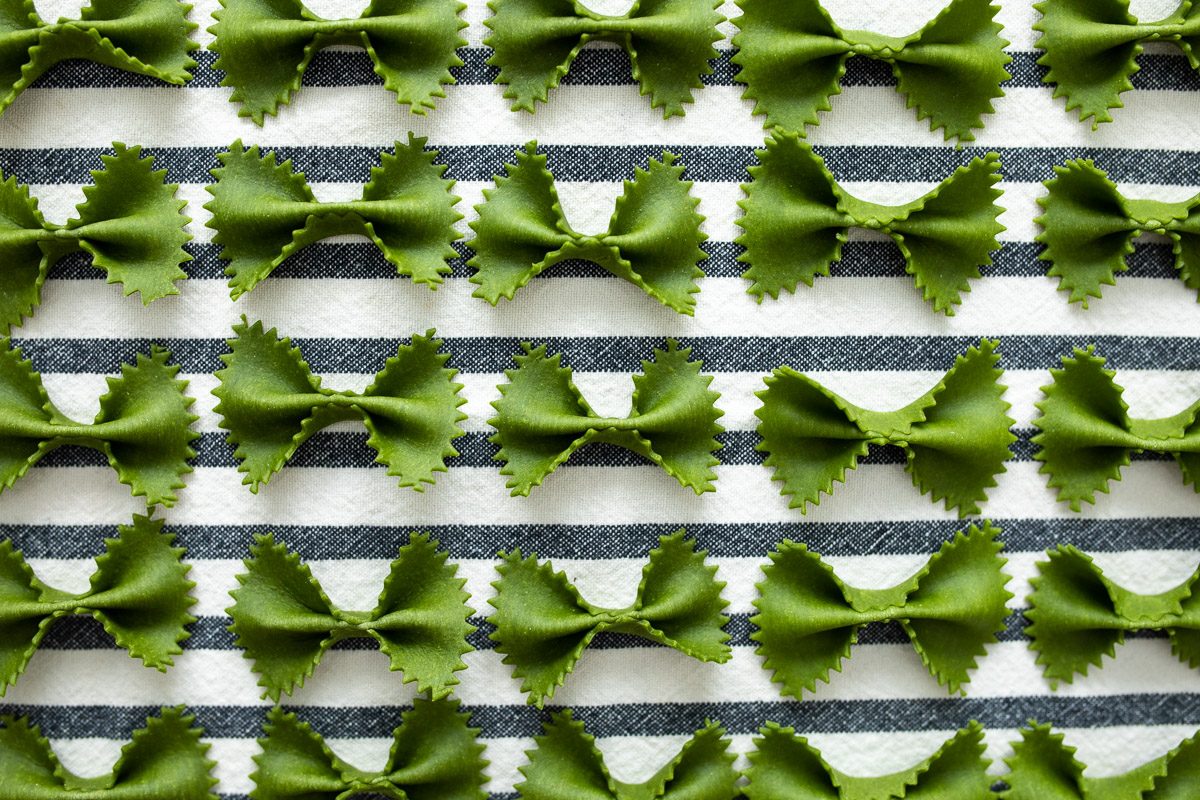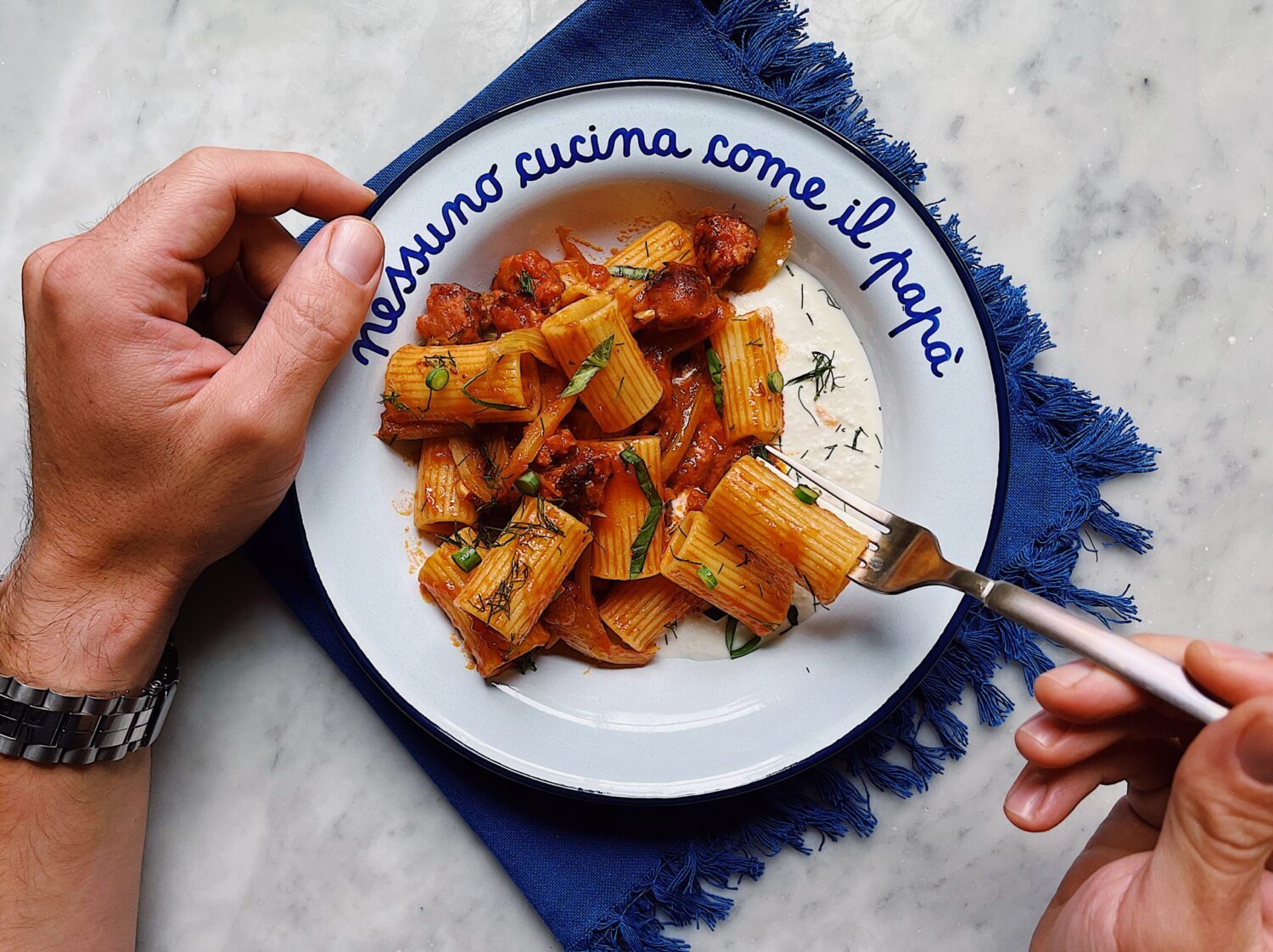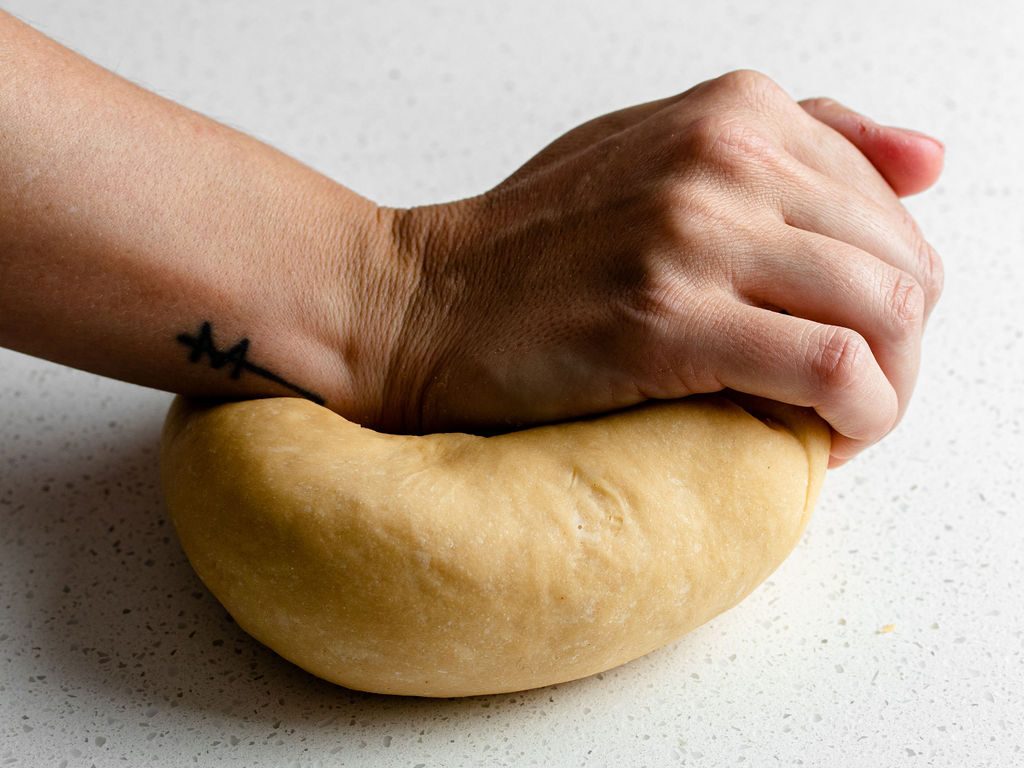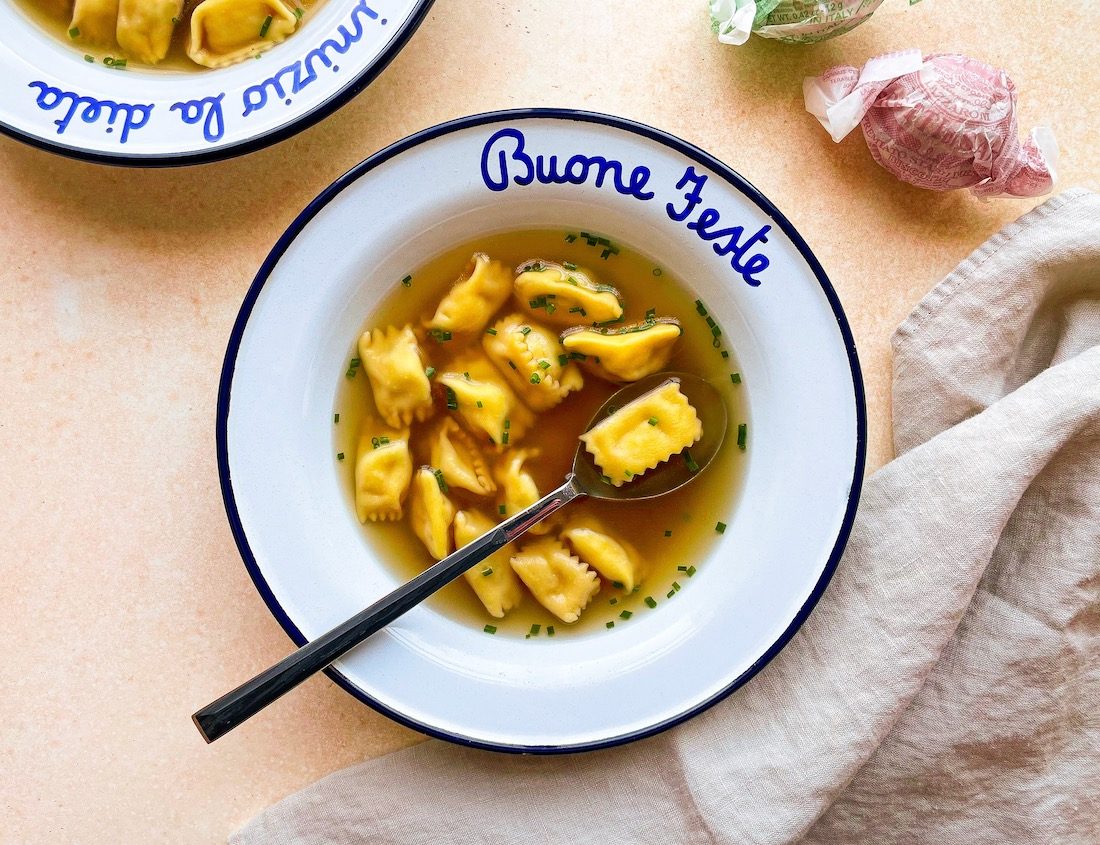
Mashed Potato Agnolotti in Garlic-Shallot Broth
Photo and recipe by Meryl Feinstein
This twist on pasta in brodo is the hug-in-a-bowl we’re all craving this time of year. Aromatic garlic and shallots form the backbone of a soul-soothing broth that’s flavorful yet delicate enough to let the pasta (in this case, adorable agnolotti del plin) shine. But don’t let the subtlety of the ingredients fool you—infusing the potato filling with plenty of herbs and a dollop of crème fraîche wakes up the tongue with every bite. To me, this dish is project cooking at its best: simple, comforting, and fun for the whole family.
A couple of notes:
- The broth and filling can be made in advance, so don’t hesitate to make this dish over a couple of days.
- Any small, filled pasta will work well here. Keep it simple with little ravioli or triangoli, or go with cappelletti if you prefer. The sky’s the limit!
Mashed Potato Agnolotti in Garlic-Shallot Broth
Serves 4
Prep time: 4 Hours
Cook time: 2 Hours
Special equipment
- Potato ricer (optional, but helpful)
- Kitchen scale (optional, but helpful)
- Pasta machine
- Fluted pasta cutter
Ingredients
For the filling:
680 grams (1½ lbs) Yukon gold potatoes, peeled and cut into large pieces
80 ml (⅓ cup) heavy cream
30 grams (2 tablespoons) unsalted butter
1 large garlic clove, peeled and smashed
1 sprig fresh rosemary
1 sprig fresh thyme
30 grams (1 ounce) finely grated Parmigiano Reggiano, Grana Padano, or Pecorino Romano
15 grams (1 tablespoon) crème fraîche
2 tablespoons minced chives
Kosher salt and freshly ground black pepper, q.b.
For the broth:
30 ml (2 tablespoons) extra-virgin olive oil
2 large or 3 small garlic heads
6 large shallots
8 grams (1 tablespoon) black peppercorns
2 sprigs fresh sage
2 sprigs fresh thyme
5 sprigs fresh flat-leaf parsley
About 4½ quarts (18 cups) water
For the pasta:
350 grams (~3 scant cups) ‘00’ flour or all-purpose flour
50 grams (~¼ cup) semola rimacinata or semolina flour (optional; you can replace it with the same weight in ‘00’ or all-purpose flour for a more tender dough)
225 grams eggs (~4 large eggs and 1 to 2 egg yolks)
Coarse semolina flour, for dusting
Method
To make the filling:
1. Add the potatoes to a medium pot and cover with cold water. Season generously with kosher salt and bring to a boil. Cook at a rapid simmer until tender and easily pierced with a fork, about 15 minutes.
2. While the potatoes cook, combine the cream, butter, garlic, rosemary, thyme, and a generous amount of black pepper in a small saucepan over medium-low heat, stirring often. When the cream starts to bubble, remove from the heat and let stand for 10 minutes, or until the potatoes are ready.
3. Drain the potatoes thoroughly and line a sheet pan with paper towels. When the potatoes are cool enough to handle but still warm, pass them through a ricer onto the sheet pan and spread them out so the steam can escape (alternatively, mash them with a fork or potato masher, and then spread them out on the sheet pan). Pat dry with more paper towels and, once mostly cool, transfer to a medium bowl.
4. Remove the garlic and herbs from the cream mixture. Pour the cream over the potatoes and gently fold to combine. Then fold in the cheese, crème fraîche, and chives. Season, to taste, with salt and pepper
5. Transfer the filling to a piping bag and chill thoroughly before use. The filling can be made up to 2 days ahead.
To make the broth:
1. Cut the tops off the garlic heads crosswise so the cloves are exposed. Halve the shallots through the root—leave half as-is, with the skins on, and peel and thinly slice the other half.
2. In a Dutch oven or large stock pot, heat the olive oil over medium heat. Add the sliced shallots and a pinch of salt, and cook until very tender and beginning to brown, stirring frequently, 8 to 10 minutes. Push the shallots to the side of the pot and add a splash more of olive oil. Add the garlic and halved shallots—all cut-side down—and cook until a little browned, 2 to 3 minutes (lower the heat as needed).
3. Add the peppercorns and herbs to the pot. Pour in about 4-5 quarts of water, or enough so that everything is mostly submerged. Bring to a boil, then immediately reduce to a low simmer.
4. Cook the broth until golden and fragrant, about 1½ hours. (In the meantime, make the pasta.)
5. When the broth is done, remove the garlic heads and squeeze the cloves into a small bowl. Mash them into a fine paste with a fork, then stir the garlic paste into the broth. Strain it through a fine-mesh sieve into a heat-proof bowl or medium pot. Season to taste with salt. The strained broth can be stored in the fridge for up to 5 days and in the freezer for a couple of months.
To make the pasta:
1. Make the pasta dough by hand (see instructions for the “well method” here) and knead it vigorously until smooth and firm, about 10 minutes. Alternatively, add the flour and eggs to the bowl of a stand mixer fitted with the dough hook. Mix on low speed, scraping down the sides of the bowl as needed, until the mixture comes together, about 7 minutes. Transfer the dough to a flat, ideally wooden work surface and knead for 2 to 3 minutes until smooth and firm.
2. Wrap the dough tightly in plastic and allow it to rest at room temperature for at least 30 minutes.
3. Line a sheet pan with semolina flour, cornmeal, or a dry dish towel and keep it nearby. Cut off a quarter of the dough and re-wrap the remainder immediately.
4. Flatten the dough with the heel of your hand until it’s about ¼-inch thick. Set the pasta machine to its widest setting and roll the dough through once (it will be tapered at the ends). Fold both ends into the center like an envelope, so the width of the pasta sheet is similar in width to the pasta roller. Roll the dough through the widest setting once more so the result is an even rectangle.
5. Continue rolling the pasta sheet through the machine once on each progressive setting until you have a very thin sheet (about setting 7 or 8 on a Marcato Atlas 150 manual roller or setting 6 twice through using the KitchenAid attachment). If the dough is at all sticky as it goes through the machine, dust both sides with a little ‘00’ or all-purpose flour.
6. Once you have a long, near-transparent sheet of pasta, lay it on a wooden surface and trim any uneven edges (ball up the scraps and wrap them in plastic to rehydrate—they can be rerolled at the end.) If you don’t have a wooden surface, dust a little flour on the bottom of the pasta sheet and your countertop to prevent sticking.
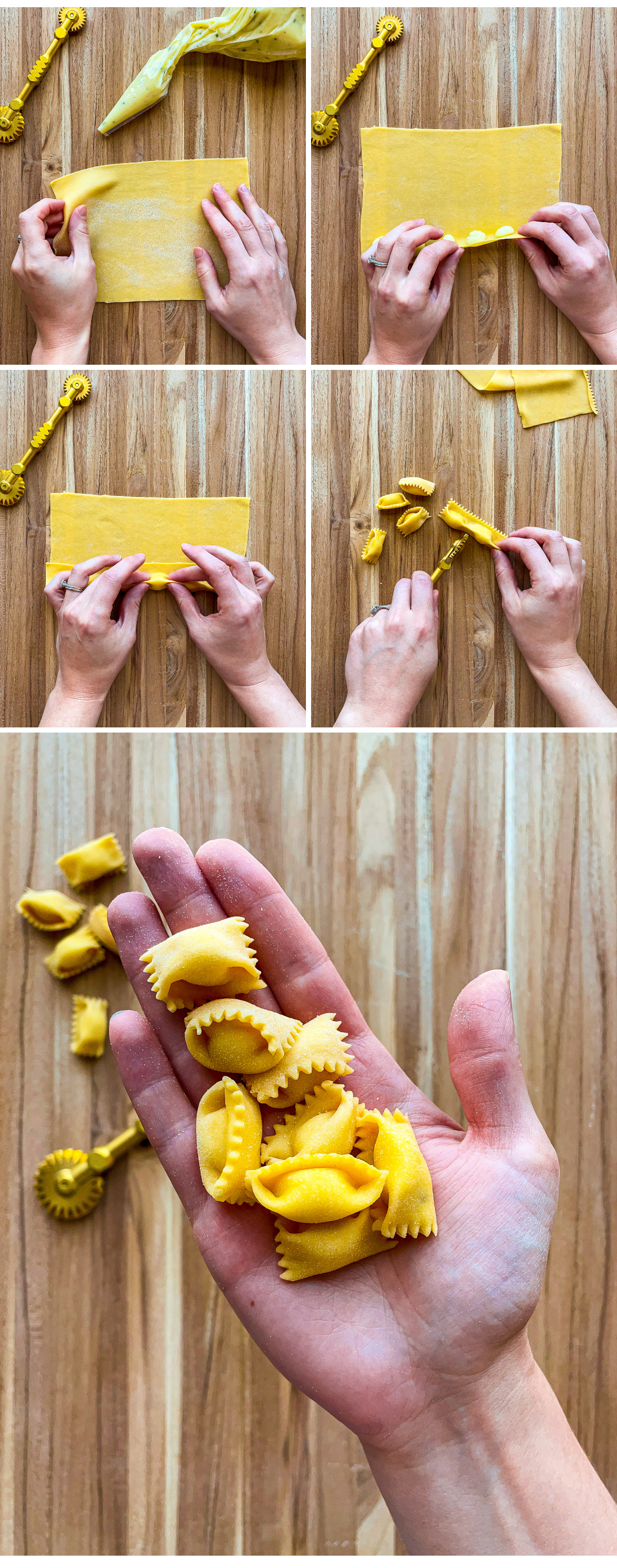
7. To form the agnolotti, dot small amounts of filling, about 1 teaspoon each, along the length of the bottom of the pasta sheet. Leave a small gap between the edge of the sheet and the filling pockets, as well as between each dollop. Then, starting from the bottom edge, gently fold the pasta sheet over to encase the filling. Use a finger to press and seal the seam.
8. Pinch the gaps between each filling pocket upwards between your thumb and index fingers—it should stand vertically. Then, using a fluted pasta cutter, trim off the excess pasta sheet lengthwise close to the filling, but leaving some overhang to prevent leaking (you can make more agnolotti out of the trimming). Finally, cut forcefully between each filling pocket to create the individual pieces and that signature “pinch.”
9. Spread the finished pieces out the prepared baking sheet while you work and repeat the process with the remaining dough.
To assemble the dish:
1. Bring the broth to a gentle simmer. Carefully add the agnolotti, shaking off any excess flour, and cook until almost tender, about 2½ minutes (you might need to do this in batches).
2. Divide the pasta and broth among bowls. Serve immediately.
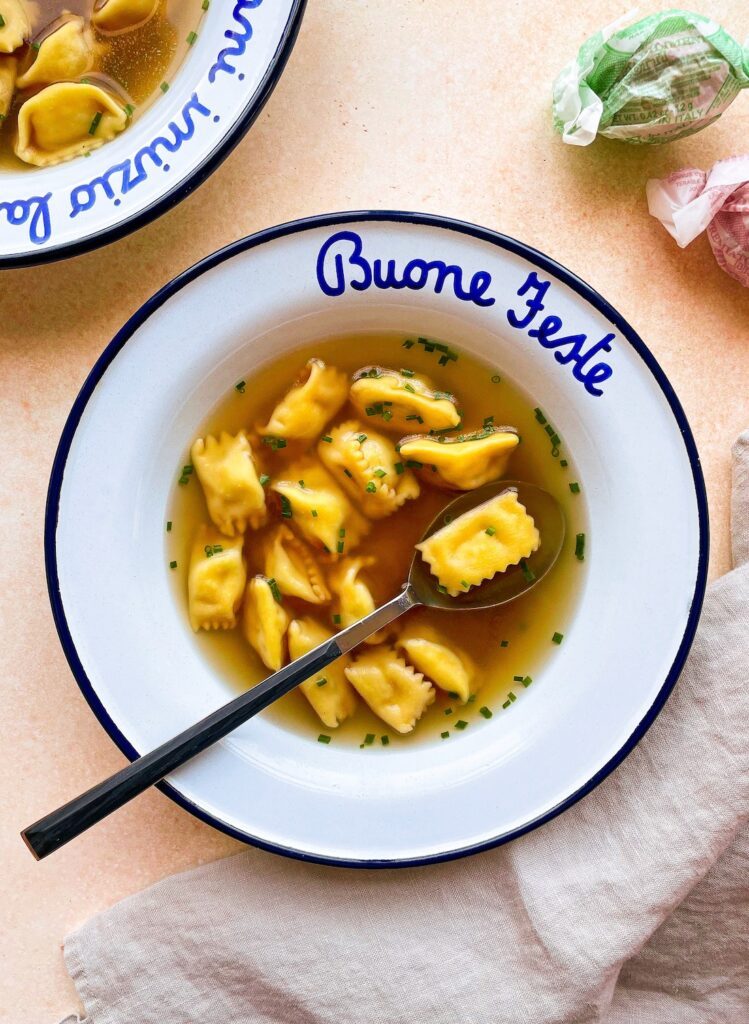

Meryl Feinstein is a chef, pasta maker, and food writer who left the corporate world for the food industry in 2018. After graduating from the Institute of Culinary Education, Meryl got her start at the renowned New York establishments Lilia and Misi, where she was part of the pasta production team. During her time in New York, she founded Pasta Social Club, a platform that brings people together over a shared love of food, learning, and making connections both on- and offline. Meryl now lives in Washington, D.C., where she develops recipes and teaches pasta-making workshops. She is the author of Pasta Every Day, a guide to making pasta doughs, shapes, fillings, and sauces with joy and confidence for all home cooks, which will be published in September 2023. Her dishes draw on her travels in Italy, ongoing research into the rich history of traditional pasta making, and her Jewish heritage.
Post a Comment
You must be logged in to post a comment.


